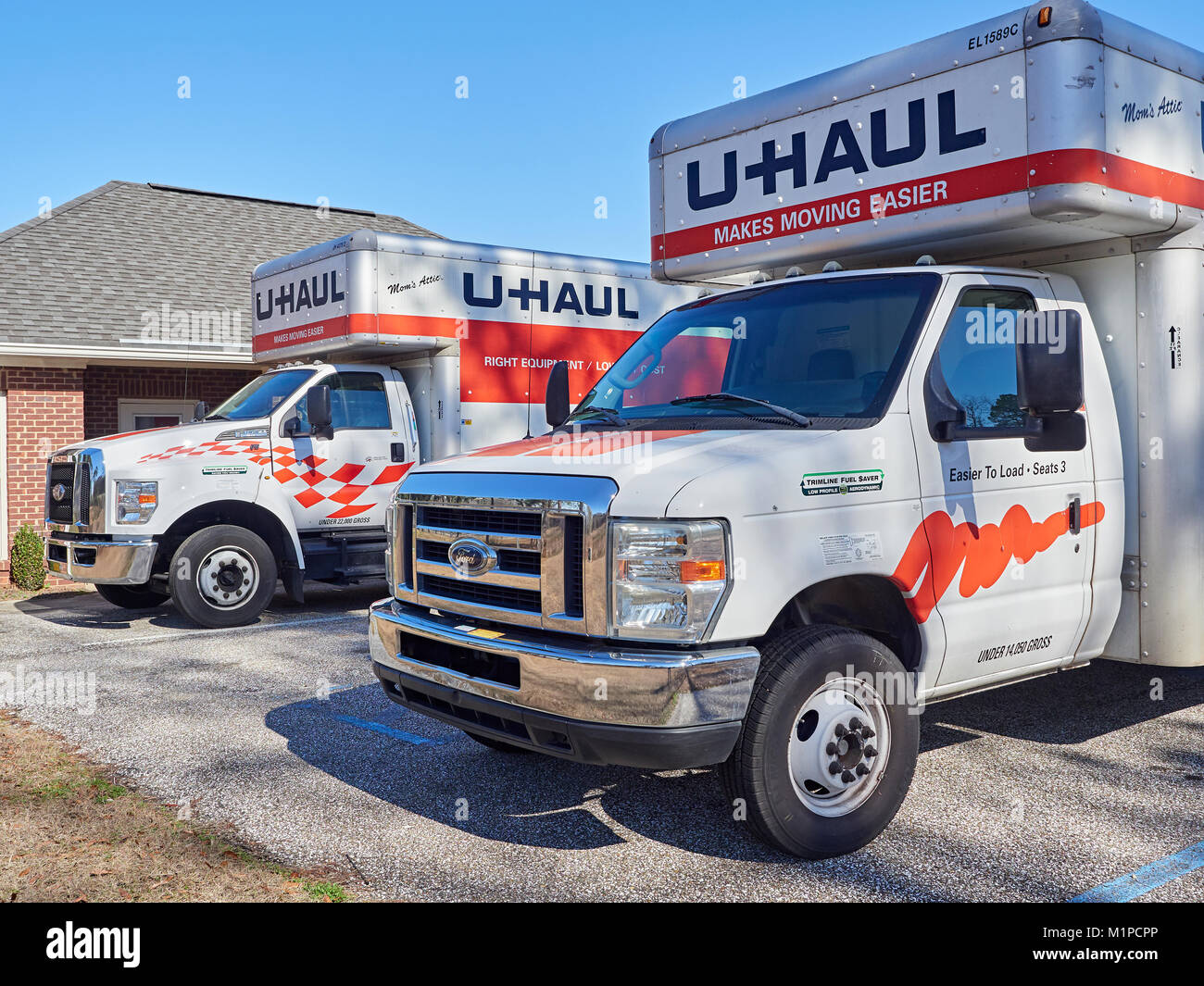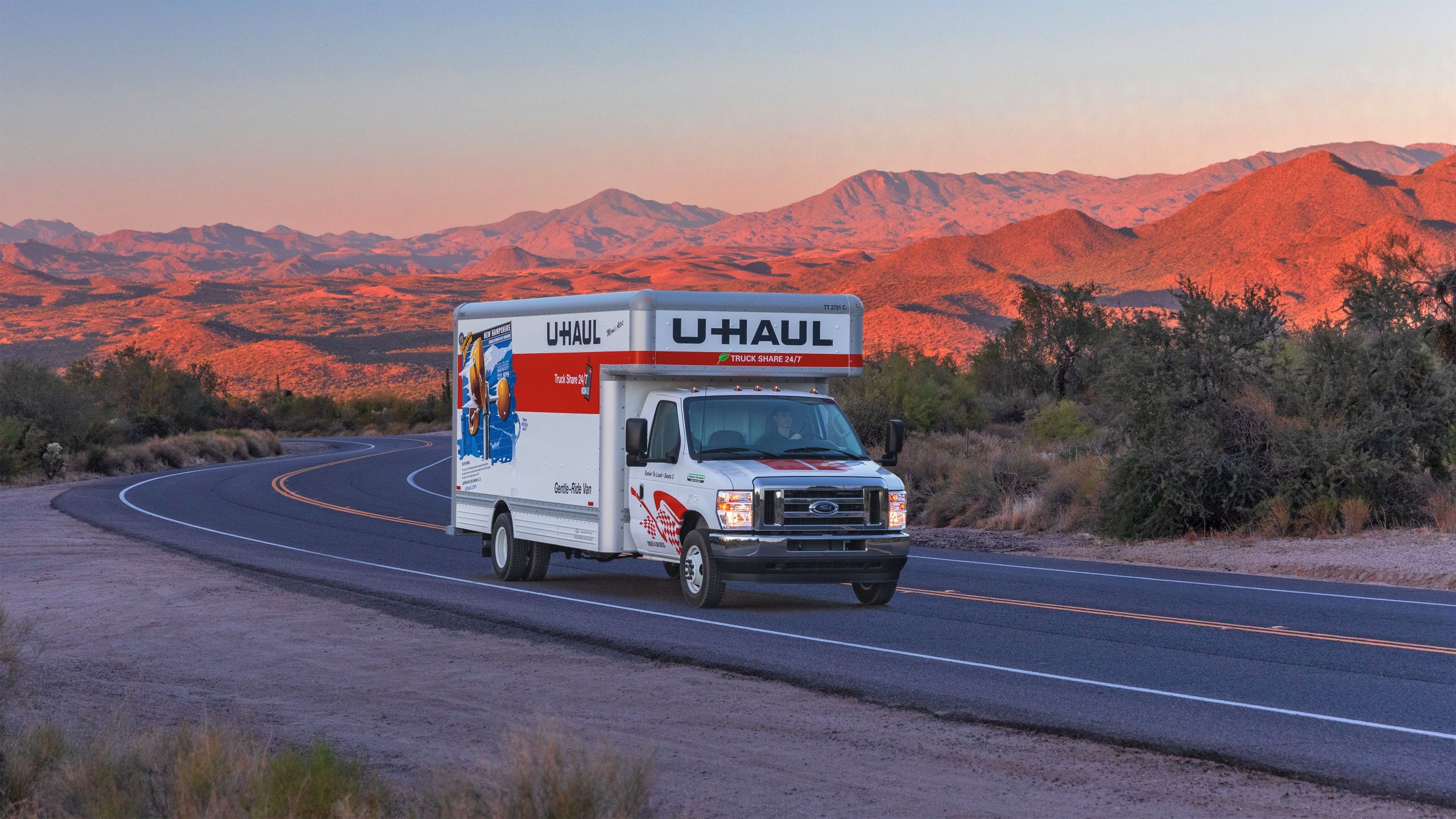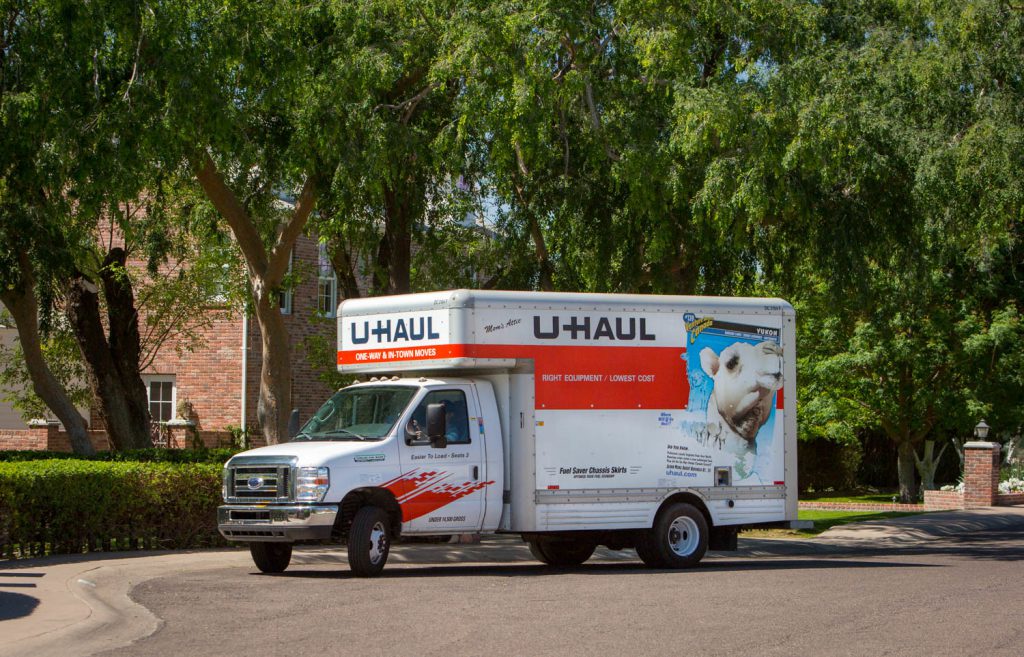U-Haul Box Truck Rental Cost: A Comprehensive Guide to Your Moving Budget types.truckstrend.com
Moving, whether across town or across the country, often involves the significant logistical challenge of transporting your belongings. For many, U-Haul box trucks emerge as the go-to solution, offering a range of sizes to suit various needs. However, understanding the true cost of renting a U-Haul box truck goes far beyond the initial quoted daily rate. It’s a multi-faceted equation involving base fees, mileage, fuel, optional add-ons, and environmental factors. This comprehensive guide aims to demystify U-Haul box truck rental costs, empowering you with the knowledge to budget effectively and avoid unwelcome surprises on your moving day.
Understanding the U-Haul Box Truck Fleet and Its Impact on Cost
U-Haul Box Truck Rental Cost: A Comprehensive Guide to Your Moving Budget
U-Haul offers a diverse fleet of box trucks, each designed for specific moving scenarios. The size of the truck you choose directly influences your base rental rate and, to some extent, your fuel efficiency. Knowing which truck fits your needs is the first step in cost management.
- 8-Foot Pickup Truck & Cargo Van: While not traditional "box trucks," these are often the smallest options for very small moves (e.g., studio apartment, dorm room).
- 10-Foot Box Truck: Ideal for studio or 1-bedroom apartments. Easy to drive.
- 15-Foot Box Truck: Suited for 1-2 bedroom apartments or small homes. A popular choice for its balance of size and maneuverability.
- 17-Foot Box Truck: Good for 2-3 bedroom homes. Offers more space than the 15-foot without being excessively large.
- 20-Foot Box Truck: Recommended for 3-4 bedroom homes. A substantial increase in capacity.
- 26-Foot Box Truck: The largest option, designed for 4+ bedroom homes or large commercial moves. This truck will have the highest base rate and the lowest fuel efficiency.

Generally, the larger the truck, the higher its base rental rate.
The Core Cost Components: What You Actually Pay For
When calculating your U-Haul rental cost, several key components come into play. It’s crucial to understand each to get an accurate estimate.
1. Base Rental Rate

This is the foundational cost of the truck itself. U-Haul operates on two primary rental models:
- In-Town (Local) Rental: This is typically a lower flat daily rate, plus a per-mile charge. You pick up and drop off the truck at the same U-Haul location. This model is ideal for short-distance moves where you know your mileage will be limited.
- One-Way Rental: This model is designed for long-distance moves where you pick up the truck at one U-Haul location and drop it off at another. The cost is a fixed rate for the entire rental period (often a few days), and it includes a predetermined mileage allowance. There is no additional per-mile charge unless you exceed the allowance. The one-way rate is generally higher than the in-town daily rate but provides cost predictability for longer journeys.

2. Mileage Charges (For In-Town Rentals)
For in-town rentals, every mile you drive incurs a separate charge. This rate typically ranges from $0.69 to $0.99 per mile, but it can vary by location and truck size. Accurately estimating your mileage for a local move is critical to managing this cost component.
3. Fuel Costs
This is often the most overlooked and variable expense. U-Haul trucks operate on unleaded gasoline (or diesel for some larger commercial vehicles, though most box trucks are gas). You are responsible for returning the truck with the same amount of fuel it had when you picked it up. Failure to do so will result in a refueling charge, which is often higher per gallon than what you’d pay at a gas station. Fuel efficiency varies greatly by truck size, load weight, and driving conditions, but generally ranges from 8 to 15 miles per gallon (MPG).
4. Environmental Fee
A small, non-negotiable environmental fee is usually added to every U-Haul rental. This typically ranges from $1 to $5.
5. Sales Tax
Applicable sales tax will be added to your total rental cost, varying based on your pick-up location’s local and state tax rates.
Optional Add-Ons and Their Impact on Cost
While not mandatory, several optional services and products can significantly increase your overall moving budget.
1. Damage Coverage (Safemove® & Safemove Plus®)
U-Haul offers various protection plans that cover damages to the rental truck. Your personal auto insurance typically does not cover rental trucks, so these plans are highly recommended for peace of mind.
- Safemove®: Covers accidental damage to the U-Haul equipment, medical and life coverage for occupants, and cargo protection.
- Safemove Plus®: Offers all Safemove benefits plus supplemental liability insurance, providing broader coverage.
These plans can add anywhere from $15 to $50+ per day depending on the truck size and level of coverage.
2. Towing Equipment (Tow Dolly / Car Carrier)
If you need to transport a vehicle along with your belongings, U-Haul offers tow dollies (for front-wheel-drive vehicles) and auto transports (for all-wheel-drive or larger vehicles). These are separate rentals and add to your cost.
- Tow Dolly: Typically costs $40 – $70+ for in-town, or a fixed rate for one-way.
- Auto Transport: Generally more expensive, ranging from $60 – $100+ for in-town, or a higher fixed rate for one-way.
3. Moving Supplies
U-Haul locations also sell a wide array of moving supplies, including:
- Boxes: Various sizes, prices per box.
- Furniture Pads/Moving Blankets: Essential for protecting furniture; rental or purchase options.
- Dollies (Utility/Appliance): Renting these can save your back and time.
- Tie-downs, straps, packing tape, mattress bags: All add to the total.
While convenient, purchasing all your supplies from U-Haul can quickly inflate your budget.
4. Moving Help® Services
U-Haul partners with independent moving labor companies through its "Moving Help®" marketplace. You can hire movers to load, unload, or pack your truck. This is a separate, hourly-based service and is not included in the truck rental cost, but it’s a valuable consideration for your overall moving budget.
In-Town vs. One-Way Rentals: A Cost Comparison
The choice between an in-town and a one-way rental is perhaps the most significant determinant of your U-Haul cost structure.
-
In-Town Rental (Local):
- Cost Structure: Low daily rate + per-mile charge.
- Pros: Cheaper for very short distances, more flexibility with return time within the day.
- Cons: Mileage adds up quickly, you must return to the original location.
- Best For: Moves within the same city, picking up furniture, transporting items for an event.
-
One-Way Rental (Long-Distance):
- Cost Structure: Fixed rate for the rental period (often 2-5 days) including a set mileage allowance.
- Pros: Predictable cost for long distances, convenient drop-off at a new location, no per-mile charge (within allowance).
- Cons: Higher base rate than a single day of in-town, less flexible on duration, can incur high fees if mileage allowance is exceeded.
- Best For: Cross-state moves, inter-city moves.
Practical Advice: Always get quotes for both options if your move falls into a grey area (e.g., a move to a neighboring town that’s still a significant drive). Sometimes, a one-way rental, even for a relatively short distance, can be more cost-effective if your local mileage would be very high.
Factors Influencing Your U-Haul Rental Cost
Beyond the basic components, several dynamic factors can sway your final bill:
- Truck Size: As discussed, larger trucks cost more in base rate and consume more fuel.
- Distance/Mileage: Crucial for in-town rentals; influences the one-way fixed rate.
- Rental Duration: Longer rentals (especially one-way) will naturally cost more.
- Time of Year/Demand: Peak moving seasons (summer months, particularly July and August) and peak times (end of the month, weekends) often see higher prices due to increased demand. Booking off-peak can lead to significant savings.
- Location (Pick-up/Drop-off): Rental rates can vary by city, state, and even specific U-Haul locations within a metropolitan area due to local demand and operational costs.
- Availability: Limited truck availability can drive up prices, especially for specific sizes.
How to Get an Accurate U-Haul Quote
The best way to get a precise estimate is to use the U-Haul website or app.
- Enter your pick-up and drop-off locations.
- Input your desired dates.
- Specify the truck size you need.
- Indicate if you need a tow dolly/car carrier.
The online system will generate an estimated total, including base rate, mileage (if applicable), environmental fee, and estimated taxes. It will also prompt you to add protection plans and moving supplies, allowing you to see their impact on the total.
Important Note: The online quote is an estimate. Your final bill will depend on actual mileage (for in-town), fuel consumption, and any additional items or services you opt for at pick-up.
Tips for Minimizing Your U-Haul Rental Cost
Being strategic can save you a substantial amount of money.
- Book in Advance: Especially during peak season, booking several weeks or even months ahead can secure better rates and ensure truck availability.
- Consider Off-Peak Times: If flexible, rent mid-week instead of weekends, or in the spring/fall rather than summer.
- Choose the Right Truck Size: Don’t pay for space you don’t need. Use U-Haul’s online estimators to select the smallest truck that can comfortably fit your belongings. Conversely, don’t underestimate, as multiple trips or needing a larger truck mid-move will cost more.
- Pack Efficiently: Maximize space in the truck to avoid needing a larger size or making multiple trips.
- Return with the Correct Fuel Level: Always refuel the truck to the level it was at pick-up to avoid costly refueling charges. Take a photo of the fuel gauge at pick-up.
- Compare In-Town vs. One-Way Carefully: For moves that aren’t clearly local or long-distance, get quotes for both to see which is more economical.
- Decline Unnecessary Add-Ons: While protection plans are often wise, be mindful of impulse purchases like excessive moving supplies if you can source them cheaper elsewhere.
- Look for Discounts/Promotions: U-Haul occasionally offers promotions, especially during off-peak times.
Potential Challenges and Solutions
Even with careful planning, challenges can arise.
- Unexpected Mileage Overages: For in-town rentals, unanticipated detours or multiple trips can quickly inflate mileage costs. Solution: Plan your route meticulously, pack efficiently to minimize trips, and use GPS to track your route.
- Fuel Discrepancies: Disagreements over the initial fuel level can lead to disputes. Solution: Take a clear photo of the fuel gauge and odometer reading when you pick up and drop off the truck.
- Damage Claims: Accidental damage can lead to significant out-of-pocket costs if you decline coverage. Solution: Strongly consider a protection plan like Safemove. Conduct a thorough inspection and take photos/videos of the truck before you leave the lot.
- Late Returns: Returning the truck late can incur additional daily rental fees. Solution: Communicate with U-Haul immediately if you anticipate a delay. Plan your move with a buffer.
U-Haul Box Truck Rental Cost: Estimated Price Table
Please note: The prices below are estimates only and can vary significantly based on location, demand, time of year, and specific U-Haul promotions. Always get a direct quote from U-Haul for your specific needs. Mileage rates for in-town rentals can also fluctuate.
| Truck Size | Typical Use | Estimated In-Town Base Rate (Per Day) | Estimated In-Town Mileage Rate (Per Mile) | Estimated One-Way Base Rate (Example) | Estimated Fuel Economy (MPG) | Notes |
|---|---|---|---|---|---|---|
| Cargo Van | Studio/Small Apt., Deliveries | $19.95 – $29.95 | $0.79 – $0.99 | $120 – $350+ | 18-25 | Smallest enclosed option. |
| 10-Foot Box Truck | Studio/1-Bedroom Apt. | $19.95 – $29.95 | $0.79 – $0.99 | $150 – $600+ | 10-15 | Easy to drive, no ramp. |
| 15-Foot Box Truck | 1-2 Bedroom Apt./Small Home | $29.95 – $39.95 | $0.79 – $0.99 | $200 – $900+ | 10-13 | Most popular, has a loading ramp. |
| 17-Foot Box Truck | 2-3 Bedroom Home | $39.95 – $49.95 | $0.79 – $0.99 | $250 – $1200+ | 9-12 | Good balance of size & maneuverability. |
| 20-Foot Box Truck | 3-4 Bedroom Home | $39.95 – $49.95 | $0.79 – $0.99 | $300 – $1500+ | 8-10 | Significant capacity. |
| 26-Foot Box Truck | 4+ Bedroom Home/Large Commercial | $39.95 – $49.95 | $0.79 – $0.99 | $400 – $2000+ | 7-10 | Largest, requires more driving skill. |
| Additional Costs | Environmental Fee: $1-$5 | Sales Tax: Varies by location | Safemove/Safemove Plus: $15-$50+ | Tow Dolly: $40-$70+ (local) | Auto Transport: $60-$100+ (local) |
Note: One-way rates are highly variable based on distance, demand, and specific routes. A longer distance or a high-demand route will push the one-way rate significantly higher.
Frequently Asked Questions (FAQ)
Q: How is mileage calculated for U-Haul rentals?
A: For in-town rentals, mileage is calculated from the odometer reading at pick-up to the odometer reading at drop-off, and you are charged a per-mile rate. For one-way rentals, a specific mileage allowance is included in your fixed rate; you only pay extra if you exceed that allowance.
Q: Do I need to refill the gas tank before returning the truck?
A: Yes, you are required to return the truck with the same amount of fuel it had when you picked it up. If you return it with less fuel, U-Haul will refuel it and charge you a premium rate per gallon, plus a service fee.
Q: What is Safemove? Is it mandatory?
A: Safemove is U-Haul’s primary damage protection plan. It covers accidental damage to the rental equipment, medical/life coverage for occupants, and cargo protection. It is not mandatory, but highly recommended as most personal auto insurance policies do not cover rental trucks.
Q: Can I pick up a U-Haul truck at one location and drop it off at another?
A: Yes, this is called a "one-way rental." It’s designed for long-distance moves. If you need to return the truck to the same location, it’s an "in-town" or "local" rental.
Q: What happens if I return the truck late?
A: U-Haul charges for late returns. Typically, you’ll be charged an additional daily rate. It’s best to communicate with the U-Haul location if you anticipate being late to avoid extra fees.
Q: Are there any hidden fees with U-Haul rentals?
A: U-Haul is generally transparent with its pricing. The "hidden" aspects often come from misunderstanding the variable costs like mileage (for in-town), fuel, and optional add-ons that were not initially considered. Always review your quote carefully and understand the fuel policy and protection plan options.
Q: How far in advance should I book my U-Haul truck?
A: For peak moving times (summer, end of the month, weekends), booking 2-4 weeks in advance is highly recommended to ensure availability and potentially better rates. For off-peak times, a few days to a week in advance is usually sufficient.
Conclusion
Renting a U-Haul box truck is a practical solution for many moving needs, but the total cost is rarely as simple as the advertised daily rate. By understanding the core cost components – base rates, mileage, fuel, and mandatory fees – and carefully considering optional add-ons like damage coverage and moving supplies, you can develop a much more accurate budget. Strategic planning, such as booking in advance, choosing the right truck size, and being mindful of peak seasons, can lead to significant savings. Armed with this comprehensive knowledge, you can navigate the U-Haul rental process with confidence, ensuring your move is as cost-effective and stress-free as possible.
